Boys are more destructive
In one of my homeschool Facebook groups recently, someone asked the question (paraphrased because the original contained personal anecdotes, etc.):
"Are boys louder and more destructive?"
This set off a long chain of "Yes! My boys were much more destructive/rough than my girls." There were a few "My girl is quite rough and my boy is sensitive.", but a substantial majority said their boys were rougher.
Which, I suppose, is sorta OK from an empirical point of view, but I think that approach might obscure some important ideas…
First, while it's OK to say "My boys are rougher than my girls.", you run into trouble because the original poster didn't ask about "your boys", she asked about "boys". This is not a subtle difference.
One responder, who claimed a biology/genetics degree of some sort, started talking about how the genetic differences between male and female meant that boys and girls are innately different behaviorally.
Well, yeah, I suppose, kinda, but again, this hides a lot of important ideas, and crams a lot of people into very narrow categories.
It'd be much more correct to say "Male/female genetic differences have an influence on behavior." So yeah, the "typical" boy might be "louder and more destructive" than the "typical" girl, and that difference might be based on genetics, but…
Pretend we actually go out and measure the roughness/destructiveness of thousands of boys and girls. What would we find? Would we find that all boys are rougher than all girls? Well, no, of course not. We'd find ranges, variations. We'd find that most boys fall within a certain range: a bell curve. And we'd find that most girls fall within a certain range: another bell curve.
Would would that graph look like? (The units and scale don't matter.)
It might look like this:

Or this:
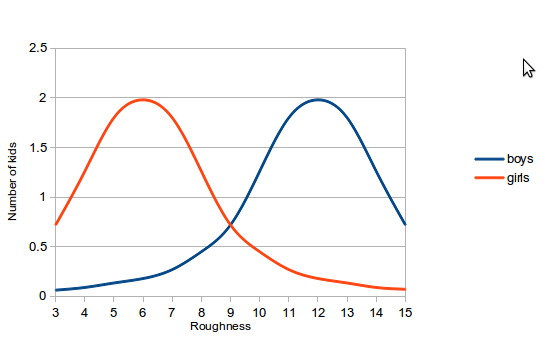
Or maybe somewhere in between:
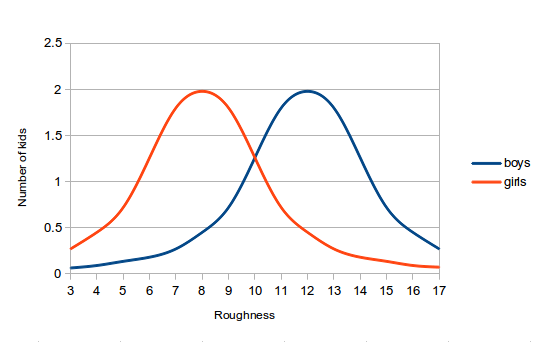
These are entirely made up, but I don't doubt one of them is not too far from the real data.
Each of these (entirely made-up) graphs would clearly show that the majority of boys are rougher than the majority of girls.
And if we add a mid-line, we can see this distinction even better:
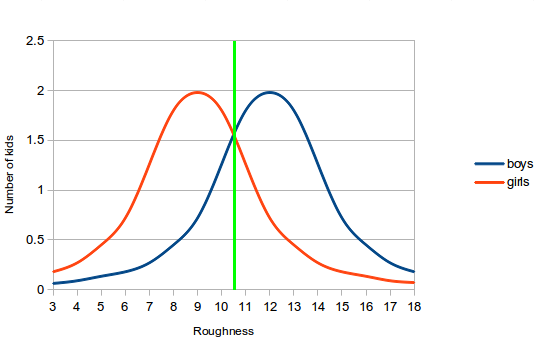
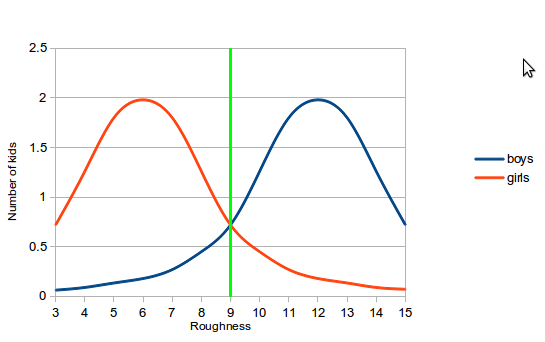
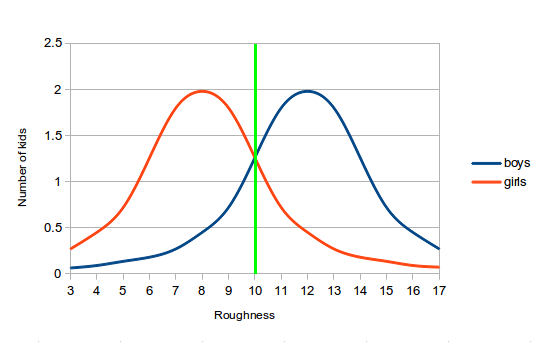
The "boys" curve peak is well separated from the "girls" peak. There's a "boys' side" and a "girls' side". So that proves it I guess? Boys are rougher than girls?
The problem is the overlap. The two curves will always overlap.
Take a look at one last set of graphs (I promise):
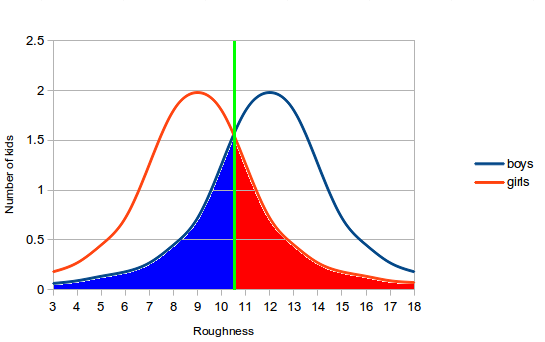
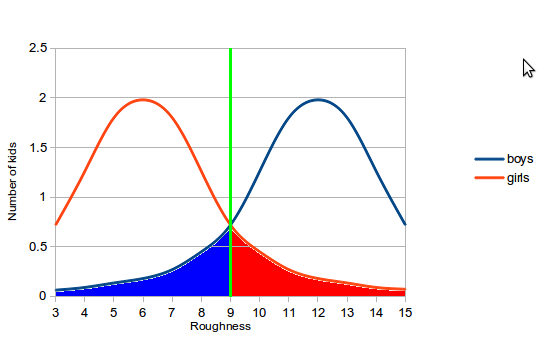
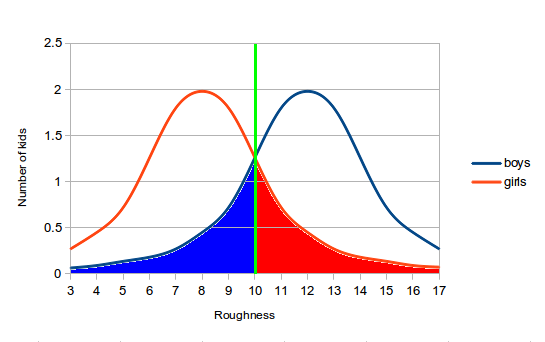
The shaded regions are those boys and girls who fall of the "other side" of the mid-line. Even in the most separated case, there are plenty of boys on the "girls' side", and plenty of girls on the "boys' side".
There is always overlap, and forgetting or ignoring that overlap is actively harmful.
Harmful?
Yes, harmful. Harmful because obviously not all boys are rougher than all girls: There are some tough "tomboys" out there, and more than a few "quiet and sensitive" boys.
When you repeat "Boys are rough and tough!" and those "quiet and sensitive" boys hear it often enough, they end up hearing "There's something wrong with you." And when the "rough and tough" girls hear it often enough, they hear "There's something wrong with you." You discourage and shame girls' involvement in rough play. You discourage and shame boys' involvement in "gentle" pastimes.
So yeah, it might (maybe) be true that "In general, boys are rougher than girls", but that is pretty useless information, because it doesn't tell you anything about any specific boy or any specific girl.
When you next meet a young girl, if you assume she won't be "rough" and she actually is, the best case scenario is that you are proven wrong; a worse case is that you make her think there's something wrong with her because she doesn't match up to your expectations.

Comments
_ Add comment